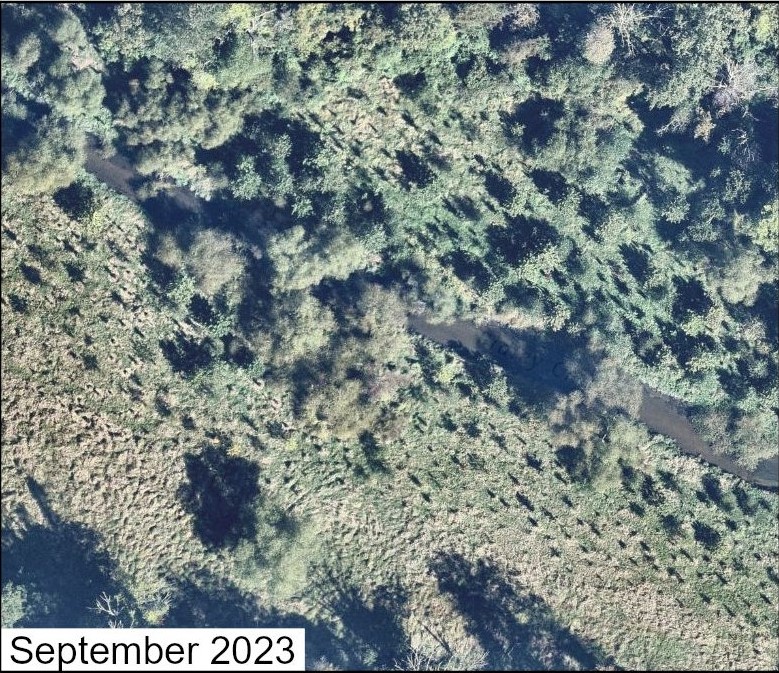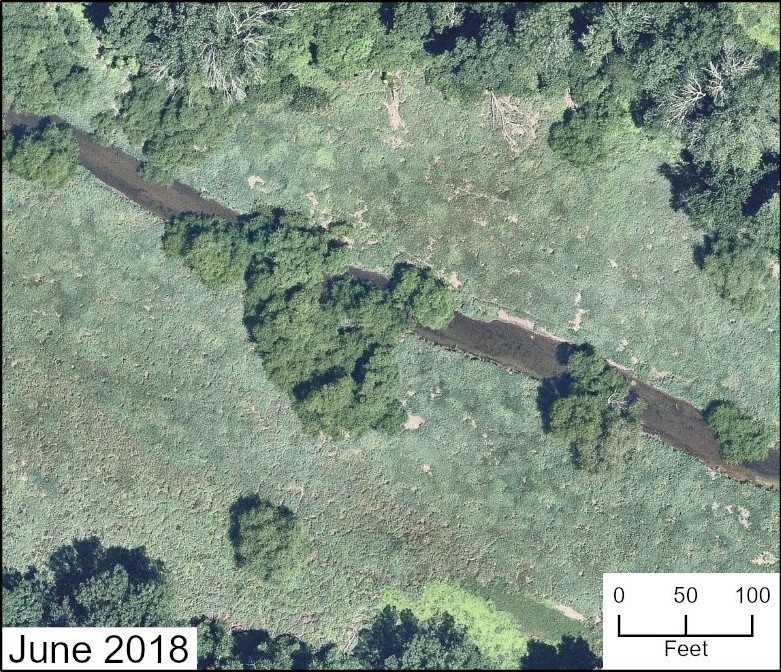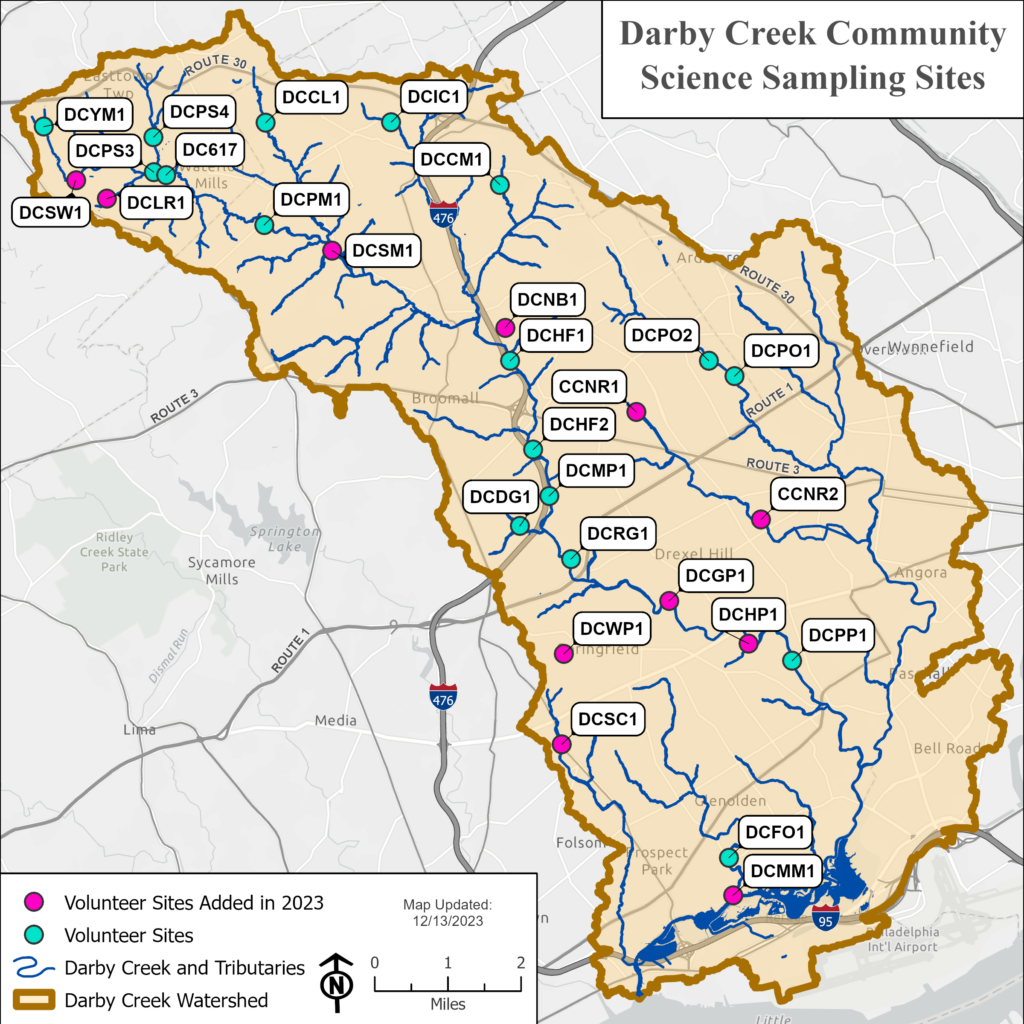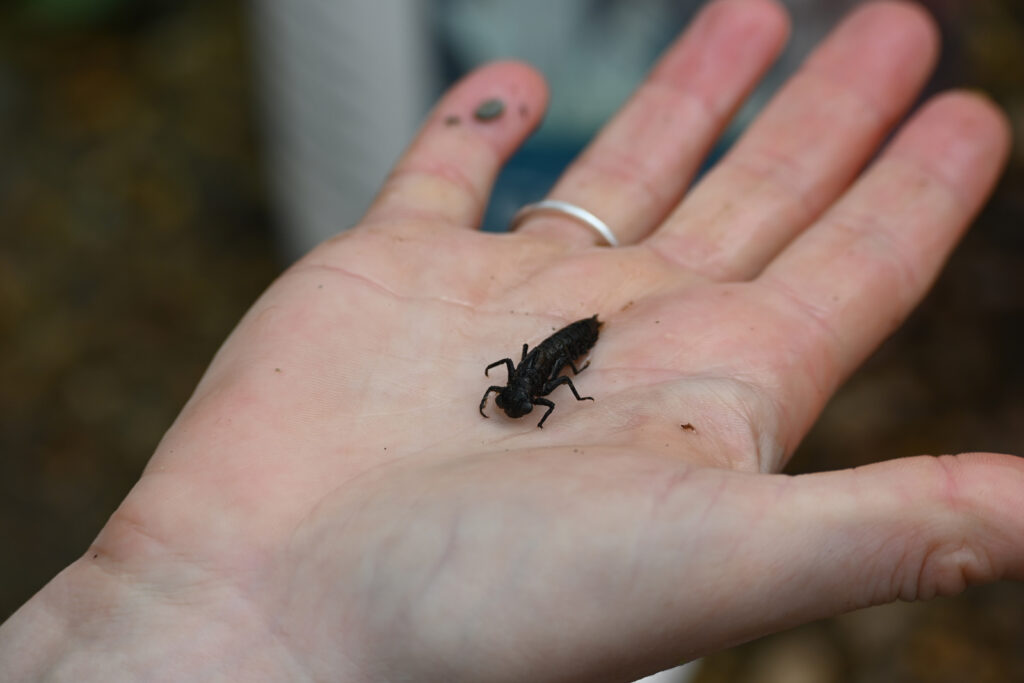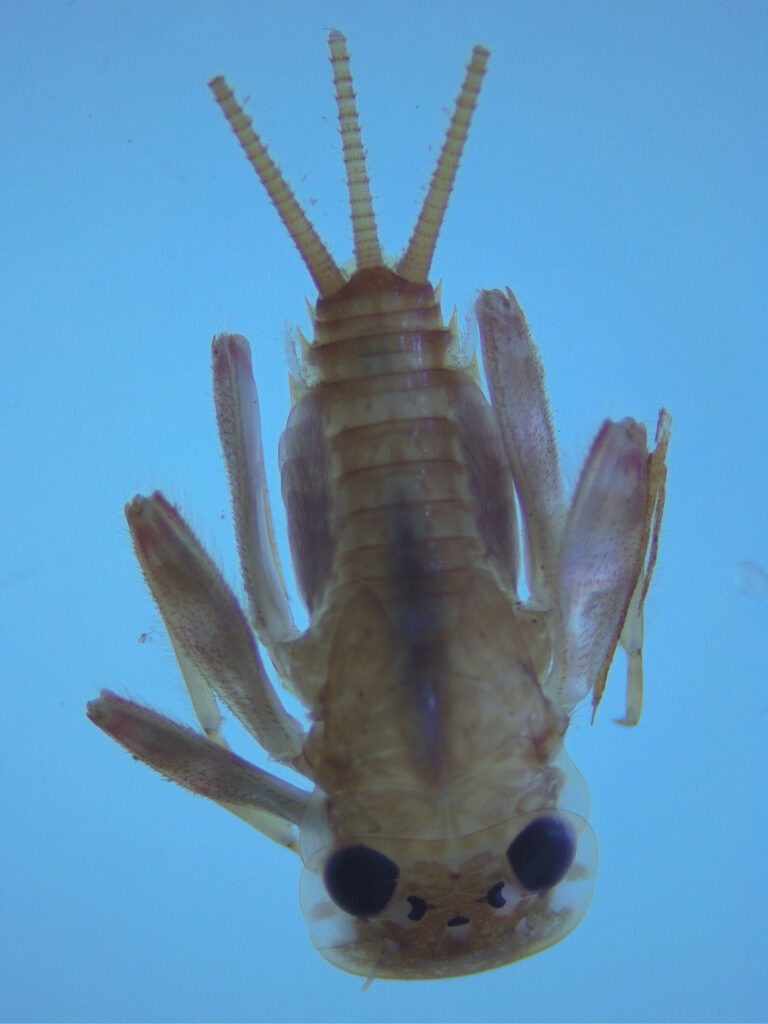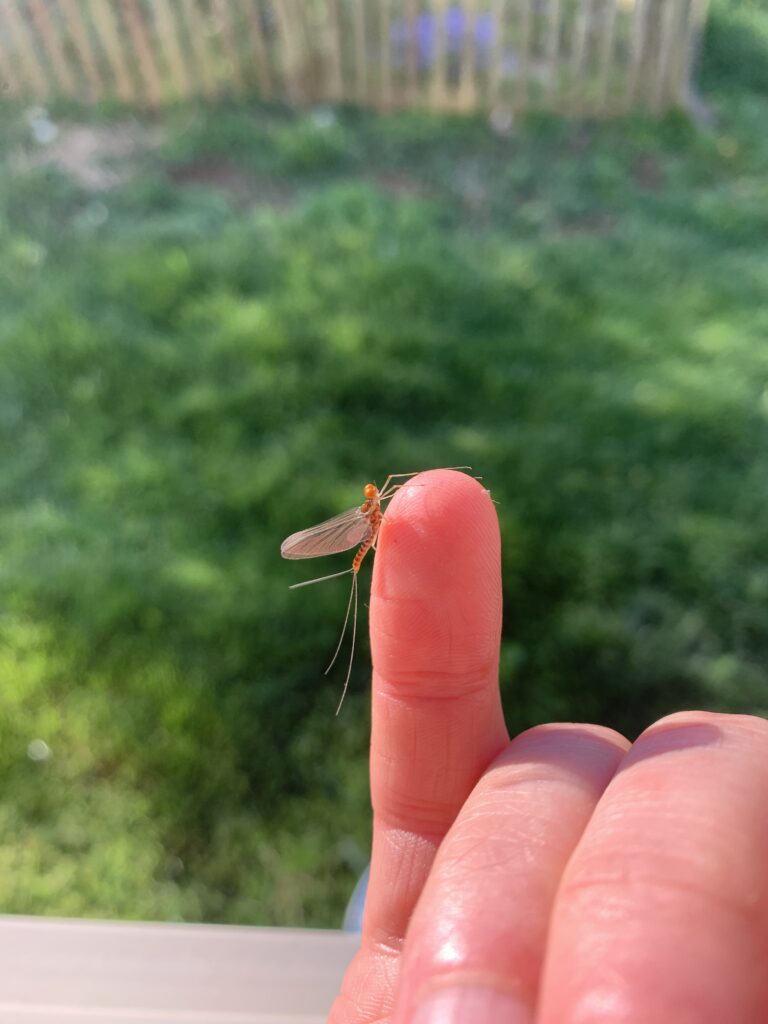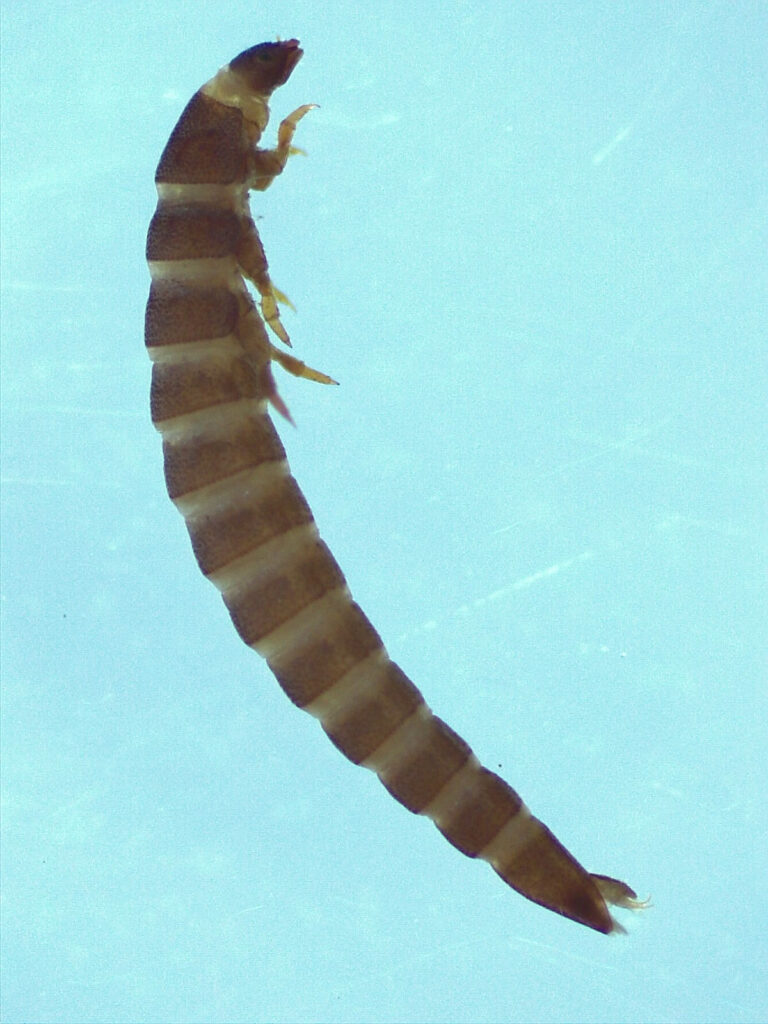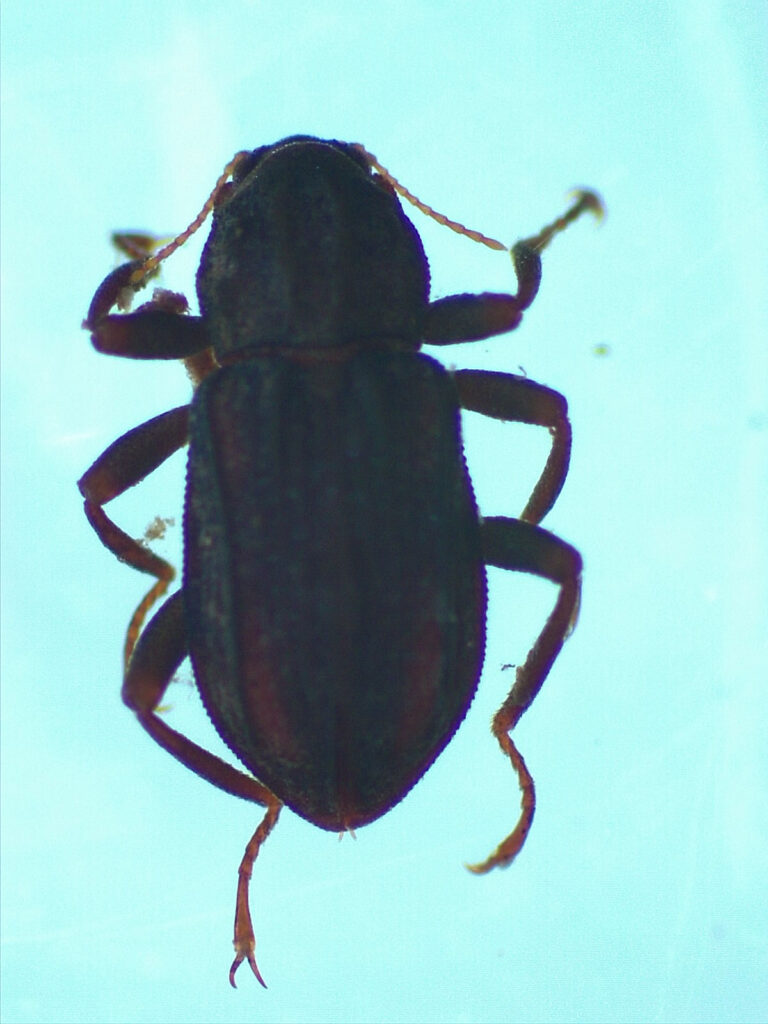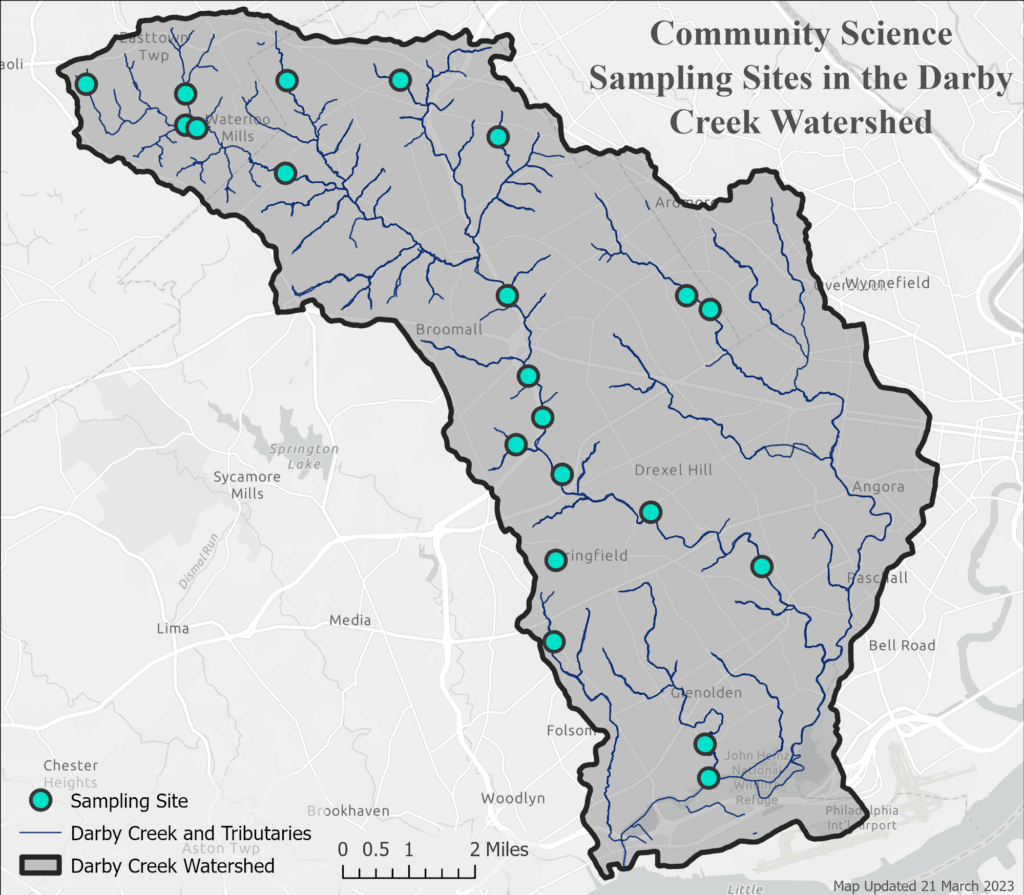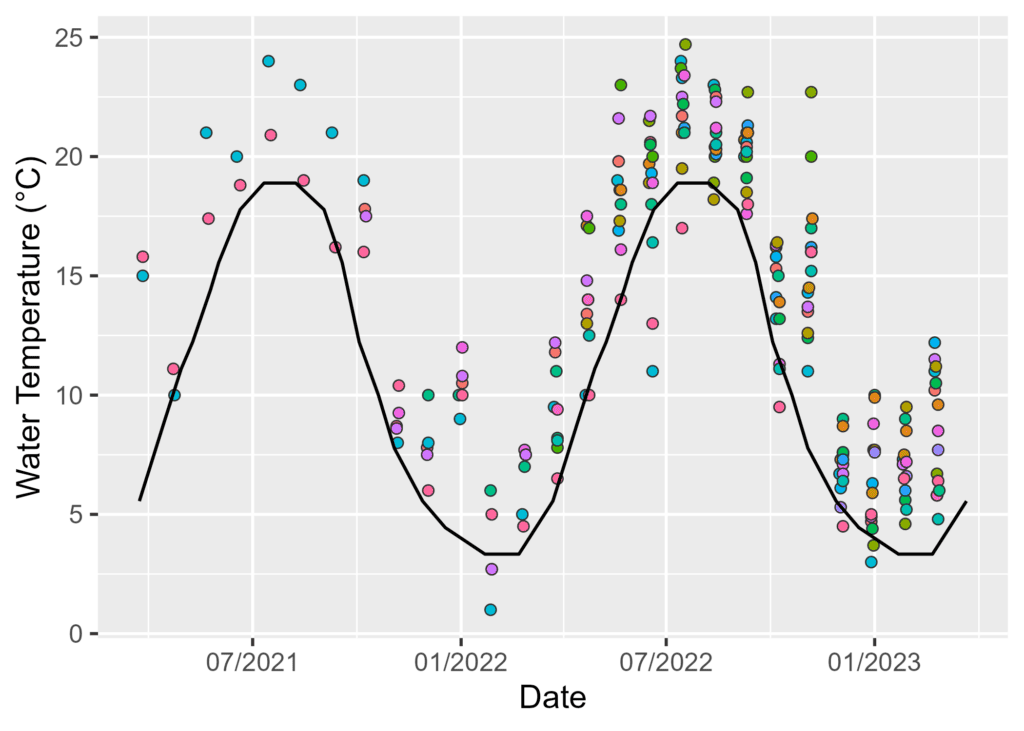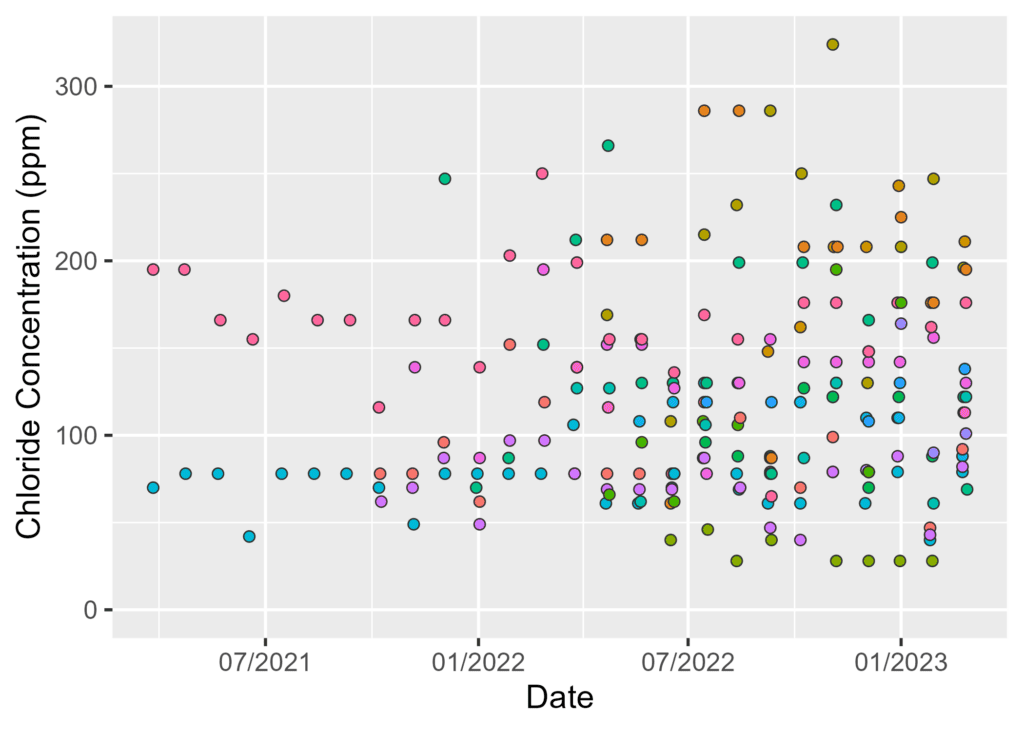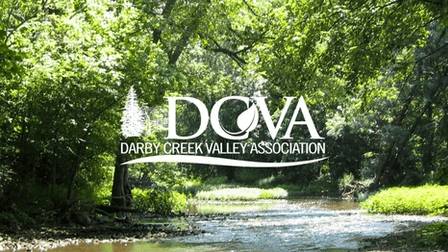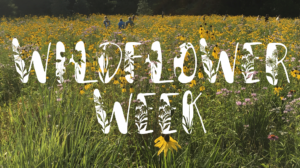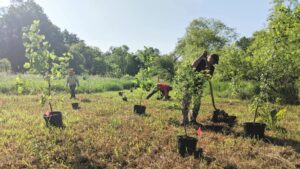The end of the year marks the end of the planting stage of the Ashbridge Tree Planting. Since 2019, generous funding from the Pennsylvania Department of Conservation and Natural Resources enabled us to plant nearly 1,500 trees and shrubs of 53 different species. What was just a few years ago an ecologically-barren swath of invasive grass is now an ecologically-rich habitat, supporting diverse pollinators, birds, and other wildlife, all while improving water quality in Ridley Creek. This project was made possible thanks to the help of dozens of staff, interns, board members, and volunteers, who spent hours digging, planting, watering, and weeding. While the planting stage is complete, the maintenance stage is just beginning. Stay tuned in 2024 for volunteer opportunities to help this planting thrive.
